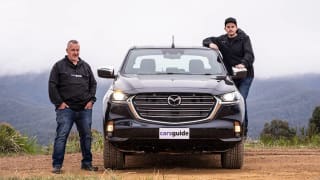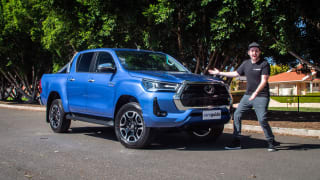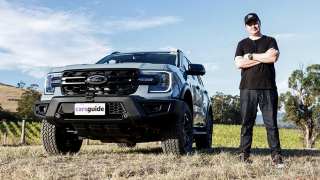Our Mercury Silver test vehicle is the LS-U, which is one rung below the premium X-Terrain on the D-Max model ladder. It’s available only with Isuzu’s trusty 3.0-litre turbo-diesel engine and either standard six-speed manual transmission or optional six-speed torque converter automatic like our example, for a list price of $59,400 plus ORCs.
That’s $6500 less than the X-Terrain yet it combines similar upmarket looks with standard features unique to this model grade, most notably the eye-catching 18-inch machined-face alloy wheels with 265/60R18 tyres and a full-size steel spare. Ours is also fitted with Isuzu’s genuine accessory roller tonneau cover (standard only on X-Terrain), which doesn’t leave much change from $3K but looks sharp.

The MY22 LS-U adds smart keyless entry with push-button start, walk-away automatic door locking, lane support system deactivation switch, auto-dimming rear view mirror, load-tub liner and tow bar receiver. The 4x4 model’s GCM (Gross Combination Mass) has also been boosted to 6000kg.
These upgrades are in addition to the LS-U’s flashy chrome grille, side mirrors, door handles and tailgate handle, aluminium side-steps, automatic Bi-LED headlights with LED daytime running lights, auto-levelling and high beam control, LED fog lights and taillights, premium leather steering wheel and shifter, fabric-trimmed seating with power adjustable lumbar support on the driver’s seat, dual-zone climate control, eight-speaker infotainment system with 9.0-inch touchscreen, DAB+ radio, Android Auto/wireless Apple CarPlay and more.















